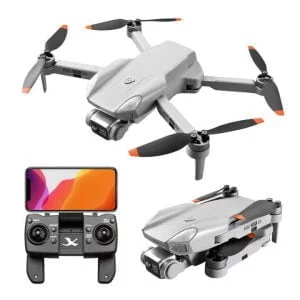Interactive White Digital Boards: The Future Of presentation?
In a world where technology is constantly evolving, it’s no surprise that the way we deliver presentations is also changing. More and more, businesses and educational institutions are turning to interactive white digital boards (IWBs) as a way to engage audiences and deliver information more dynamically.
IWBs are essentially large touchscreen displays that can be used for a variety of purposes, from presenting and brainstorming to group collaboration and teaching. Because they are interactive, they offer a more engaging and immersive experience for both the presenter and the audience.
There are many advantages of using IWBs for presentations. For one, they allow you to easily incorporate multimedia content into your presentation, making it more engaging and visually appealing. Additionally, IWBs are highly customizable, so you can tailor your presentation to the specific needs of your audience. And because they are interactive, they can help you better gauge the interest and understanding of your audience.
If you’re looking for a more interactive and engaging way to present your ideas, then an interactive white digital board may be the right solution for you. Keep reading to learn more about the benefits of using a digital board for your next presentation!
What is an Interactive White Board?
An interactive whiteboard is a digital whiteboard that allows users to interact with content using a touch-sensitive surface. Unlike a traditional whiteboard, an interactive whiteboard can be used to display and manipulate digital content such as images, videos, and text. Interactive whiteboards are becoming increasingly popular in both educational and business settings.
How can an Interactive White Board enhance presentations?
Digital boards are slowly becoming more common in workplaces and classrooms around the world. And it’s easy to see why – they offer a more interactive and engaging way to present information. But are digital boards the future of presentation?
There are pros and cons to using digital boards for presentations. On the plus side, digital boards are more engaging and can be used to create more interactive presentations. They also offer more flexibility in terms of design and layout. On the downside, digital boards can be expensive, and they may not be compatible with all software.
Only time will tell if digital boards are truly the future of presentation. But for now, they offer a more modern and engaging way to present information.
Examples of Interactive White Boards in use
There are many different types of interactive whiteboards on the market, and the specific features and capabilities vary from model to model. However, all interactive whiteboards share a few common features, such as the ability to connect to a computer, projector, and other devices. In addition, most interactive whiteboards are equipped with sensors that allow users to control the board with their hands or a stylus.
There are several ways in which interactive whiteboards can be used. For example, they can be used to give presentations, facilitate collaboration between team members, or educate students. In each of these
The pros and cons of using an Interactive WhiteBoard
There are many advantages to using digital boards for presentations. For one, they’re more engaging for audiences since they can be interactive. Additionally, digital boards can be connected to the internet, which means you can easily share information and resources with your audience. And finally, digital boards are easy to use and setup, which means you can spend less time preparing for your presentation and more time focusing on your delivery.
Whether you’re looking to use digital boards for your next presentation or you’re just curious about the technology, there’s no doubt that they’re becoming increasingly popular.
Furthermore, despite these benefits, there are still some challenges associated with IWBs. One of the biggest challenges is the cost, as IWBs can be quite expensive. Additionally, IWBs require a certain amount of technical expertise to set up and use, which can be a barrier for some users. Finally, IWBs can be distracting for some students, which can impact learning.
The future of Interactive White Boards
As IWBs become more widespread, there are several trends that are emerging in the world of IWBs. One trend is the increasing use of IWBs in the classroom. IWBs are being used more and more to supplement traditional teaching methods. Another trend is the increasing use of IWBs for distance learning. IWBs are being used to connect students and educators who are not in the same physical location.
As IWBs continue to evolve, it is estimated that by 2025, there will be over 16 million IWB users worldwide. This increase in popularity is due to the many benefits that IWBs offer, such as improved collaboration, engagement, and productivity.
 Autel EVO II Pro RTK 4k HD Drone Camera: . Discover Autel's Powerful 4K Drone Camera with RTK Technology | Capture Professional-Grade Video
1 × $5,100
Autel EVO II Pro RTK 4k HD Drone Camera: . Discover Autel's Powerful 4K Drone Camera with RTK Technology | Capture Professional-Grade Video
1 × $5,100 Flyxinsim K80 Air 2S Drone 4K Professional 1Km Range,Esc Drone Uav Motor Brushless,Price Of Drones With Hd Camera And Gps
1 × $120
Flyxinsim K80 Air 2S Drone 4K Professional 1Km Range,Esc Drone Uav Motor Brushless,Price Of Drones With Hd Camera And Gps
1 × $120
 Autel EVO II Pro RTK 4k HD Drone Camera: . Discover Autel's Powerful 4K Drone Camera with RTK Technology | Capture Professional-Grade Video
Autel EVO II Pro RTK 4k HD Drone Camera: . Discover Autel's Powerful 4K Drone Camera with RTK Technology | Capture Professional-Grade Video  Flyxinsim K80 Air 2S Drone 4K Professional 1Km Range,Esc Drone Uav Motor Brushless,Price Of Drones With Hd Camera And Gps
Flyxinsim K80 Air 2S Drone 4K Professional 1Km Range,Esc Drone Uav Motor Brushless,Price Of Drones With Hd Camera And Gps